What is an Engine Misfire and How Can You Fix It?
In this article we will be looking at what a misfiring engine means, what might cause it and how the problem can be fixed. We understand your need for a smooth running engine so please read on as we try and help you with this issue.
Engine Basics
In order to explain an engine misfire we need to quickly look at the basic operations of a combustion engine. In order for a gas car engine to start and run it needs three basic things: fuel, oxygen and a spark. If any one of these three elements is not supplied then the engine will not start or will run inefficiently.
The second point to make here is that engines have multiple cylinders which are chambers that each have a piston. In each of these cylinders an ignition of fuel, oxygen and a spark takes place. The resulting mini explosion moves the cylinders up and down.
These explosions happen multiple times per second across several cylinders and the resulting piston movement is what gets turned into engine rotation and ultimately the wheels of the car rotating as well.
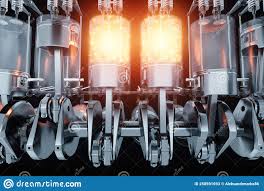
There are other aspects involved in this as well but this is the most basic explanation of how an engine works. It is based on this that we can now explain an engine misfire.
What Is an Engine Misfire?
We will first clarify that the complete lack of even one of the three elements of combustion in an engine (fuel, oxygen or spark) will prevent the engine from starting. This is not what a misfire is however. A misfire is when all three elements are present but not all of them are reaching all of the cylinders. The fuel and oxygen combine inside the cylinders and when a spark is introduced then the fuel and oxygen mix combusts.
The cylinders of our car's engine fire in a pre-set sequence one after another. If one or more of these cylinders is not getting what it needs for the combustion then it will not fire and there will be a disruption to the sequence.
This will not stop the engine but it will cause it to run poorly and in modern cars it will also likely report a trouble code in your engine's control module. This code might be P0300 which will be accompanied by P030X. The X stands for the number cylinder that is misfiring.
Symptoms of a Misfire
In this section we will give you a few possible signs to look out for with regards to a misfiring engine. It is important to know these signs as running with a misfire can be damaging to the engine itself and lead to other more major issues. These symptoms include:
Decrease of or Rough Acceleration
One of the common signs of a misfire can be a sudden drop in acceleration. If your car is not accelerating as well as it normally does this might be a misfire. You might also note that when you accelerate hard there is a jerking coming from the engine.
Rough Idling
If you know your car well you will likely notice if it starts to seem more labored while idling. This can be a sign of a misfire. It may feel rougher than normal and sound uneven or you might notice that you stall during an idle.
Vibrations
When all is well with the engine you shouldn’t feel too much vibration in the car but if there is a misfire then it can start to vibrate noticeably. This is because the engine has become unbalanced and when you idle or accelerate it will vibrate more violently than is normal.
A Change in Engine Sound
When you drive your car a lot you get used to the sound it makes when the engine is running. If the engine starts to sound noticeably different this may indicate one or more cylinders are not firing as they should.
The Check Engine Light Will Come On
This is not a subtle sign or clue the check engine light comes on when there is a problem that relates quite obviously to the engine. You can’t always tell what part is at fault from this one warning light but if it corresponds with any of the other symptoms you may want to look at a possible engine misfire as the culprit.
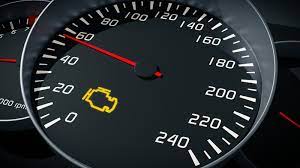
What Can Cause a Misfire?
When you consider that the engine requires fuel, oxygen and a spark to run then you might also realize that this involves a few components to make all of this work. Potentially there can be a number of issues that can be the cause of a misfiring cylinder. In this section we will try and hit upon the most common reasons.
Ignition Coil
The spark element comes from individual spark plugs which are attached to the cylinders. These spark plugs receive their electrical energy from the battery through wiring that culminates in either ignition coils or a distributor in the case of older vehicles.
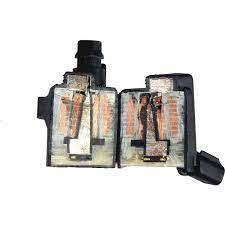
If there is an issue with any of the ignition coils or the distributor then the current for the spark might not make it to a particular cylinder. The result will be fuel mixing with oxygen but nothing to ignite it. This will cause a misfire.
Spark Plug
Sometimes spark plugs wear out and need to be replaced or they may have become dirty and their contact points need to be cleaned. This is a common cause of a misfire as again they create the spark for the ignition. An improperly functioning spark plug will cause the cylinder to which it is attached to misfire.
Changing spark plugs should be part of routine maintenance as eventually they will wear out.
Intake Manifold Gasket Leaks
The combustion process is a fine balance and you need the right fuel to oxygen ratio. If there is too much or not enough oxygen then the cylinder will not fire correctly. In this case there may be too much oxygen in the chamber creating what is known as a lean air-fuel mixture.
This is caused by an issue with the intake manifold gasket which is located between the cylinder head and the intake manifold. If this gasket leaks then too much air can enter the cylinder and ruin the fuel/air mixture.
Additionally the issue may be caused by a leaky vacuum line on the intake manifold. This is usually pretty easy to diagnose if it happens to be the cause.
Low Fuel Pressure
We have addressed the spark and the oxygen now we have a cause that relates to the fuel. Issues with fuel pressure can be a cause of a misfiring engine. This can be caused by a faulty fuel pressure regulator, a faulty fuel pump, or a clogged fuel filter.
Whatever the cause the consequences are the same: too little fuel is entering the cylinders creating a lean fuel/air mixture. There may still be combustion but it will be weak and considered a misfire.
Fuel Injectors
Another fuel based issue might arise from the fuel injectors. There is usually one injector for each cylinder and this component will make sure the correct amount of fuel is added for each ignition event. A fault with one or more of these injectors can cause the related cylinder to misfire.
Most commonly the injector might develop a fault and supply the wrong amount of fuel but they rarely fail completely especially in modern cars. So rather than a complete misfire it will be partial with just a weak ignition event.
Engine Sensor
In modern cars the engine control module is essentially the vehicle's computer. It uses a host of sensors to run and adjust the operations of the vehicle. There are several sensors that help the control module adjust the fuel/air mix to the cylinders for the most efficient running of the engine. If one or more of these sensors develops an issue then the fuel/air mix may be incorrect.
Sensors that may be at fault include:
- MAF Sensor
- MAP Sensor
- Oxygen Sensor
- Coolant Temperature Sensor
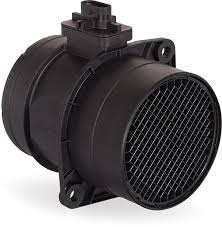
Low Compression
All of the combustion in the engine is performed under a certain level of compression in order to make sure the ignitions have the desired effect. If the engine compression is too low the ignitions may be weak leading to a misfire.
You can test the compression in your engine and compare it to the manufacturer's specs for your model. This is a less common cause of misfires and you would likely hope that it was not the problem. Compression issues are caused by parts deep in the engine so repairing this kind of problem is usually tricky and expensive.
Solutions to an Engine Misfire
Along with the many possible causes of the misfire there are an equal number of solutions or fixes. Some that you might be able to perform yourself while others might require a professional.
Check the Trouble Codes
The very first step is trying to pinpoint the cause and this can be achieved using a OBD2 scanner tool which can be purchased inexpensively. You simply plug in the scanner tool following the steps and you should be able to access any trouble codes recorded in the engine control module. A quick Google search later and you can translate that code.
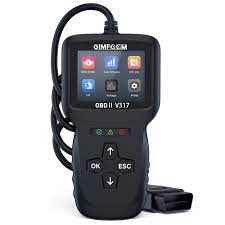
Check The Spark Plugs
This is a not too technical engine component and with a little know how or a good Youtube video you can easily check the spark plugs. A visual inspection may tell you if they are dirty or burned out thus letting you know if they need a clean or replacement.
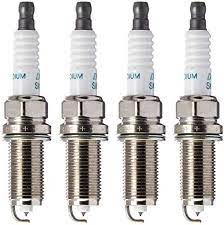
Check for Vacuum Leaks
If the spark is doing its job then we next check the air supply. As mentioned, a vacuum leak in the intake manifold may be to blame. There is a method to check this but you need to be very careful.
You simply spray a flammable spray around the engine's intake manifold while it is idling. If the engine speed increases then there is a vacuum leak as the flammable spray should not have been drawn in if all was sealed correctly.
Make sure you have a fire extinguisher at hand if you are going to try this and if you are in the least bit apprehensive do not do this.
An alternative test might be to use an EVAP smoke machine but these are expensive and not a common home garage tool. It’s not really worth the investment either unless you plan a career in auto repair.
Check Fuel Pressure
In an ideal world the fuel pressure gauge on your dashboard will tell you all you need to know and you'll have a quick diagnosis. Sometimes though sensors fail and give a false reading. If you suspect a fuel pressure issue you test this manually with an external fuel pressure gauge.
You simply attach your gauge to the fuel rail and start the engine. Compare your results to what the manufacturer says should be the pressure rating. If it is to high or too low then you know you will need to check the components related to this system such as the fuel pressure regulator, fuel pump and the fuel filter
Testing Compression
This is one of the rarer causes but if you happen to have a compression tester or a leak-down tester you may want to just check it out as a possibility. Use one of these tools to test each of the cylinders and compare your readings to the manufacturer's specifications.
Consult an Expert
If you have exhausted your technical savvy and are at a loss then it is time to call in the experts and you should never be afraid to do so. These people have been trained and have been working with cars everyday of their lives for years.
A mechanic has tools to diagnose that your average at home DIY mechanic could only dream of. So it is always a good idea to get a professional to check things out if you are not confident to do so yourself.
Conclusion
A misfiring engine can make your vehicle under perform and over time do serious damage which could be very costly. There can be many causes for a misfire, some of which can be fixed easily while others may require a new part or major overhaul of the engine.
Link To or Reference This Page
We spend a lot of time collecting, cleaning, merging, and formatting the data that is shown on the site to be as useful to you as possible.
If you found the data or information on this page useful in your research, please use the tool below to properly cite or reference Tow Ratings as the source. We appreciate your support!
-
<a href="http://towratings.net/blog/what-is-an-engine-misfire-and-how-can-you-fix-it/">What is an Engine Misfire and How Can You Fix It?</a>
-
"What is an Engine Misfire and How Can You Fix It?". Tow Ratings. Accessed on April 26, 2024. http://towratings.net/blog/what-is-an-engine-misfire-and-how-can-you-fix-it/.
-
"What is an Engine Misfire and How Can You Fix It?". Tow Ratings, http://towratings.net/blog/what-is-an-engine-misfire-and-how-can-you-fix-it/. Accessed 26 April, 2024
-
What is an Engine Misfire and How Can You Fix It?. Tow Ratings. Retrieved from http://towratings.net/blog/what-is-an-engine-misfire-and-how-can-you-fix-it/.